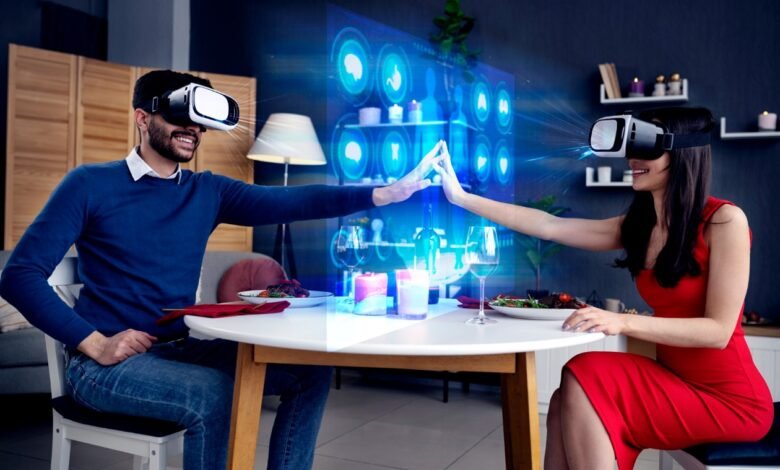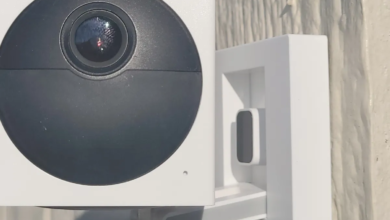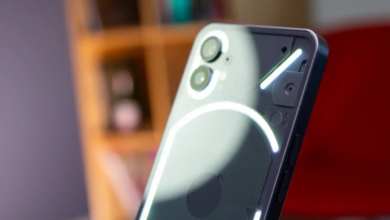5G Technology and its Impact on Augmented and Virtual Reality

In our ever-evolving digital landscape, technology continues to reshape the way we experience the world around us. One of the most significant advancements of our time is the implementation of 5G technology and its profound impact on augmented reality (AR) and virtual reality (VR). This article explores the synergy between 5G, AR, and VR, and the transformative changes it brings to various industries.
The introduction of 5G technology has been a game-changer. With its lightning-fast speeds, low latency, and expansive connectivity, it has opened up a world of possibilities for AR and VR applications. These immersive technologies, which were once constrained by bandwidth limitations, are now flourishing in a 5G ecosystem.
Understanding 5G Technology
The fifth generation of wireless technology, commonly referred to as 5G, represents a significant leap forward in the world of telecommunications. It is a technology that promises to revolutionize how we connect, communicate, and interact with the digital world. Here, we’ll break down the key aspects of 5G technology to give you a comprehensive understanding of its capabilities and potential impact.
Speed and Bandwidth
One of the most notable features of 5G is its blazing-fast speed and high bandwidth. While 4G networks provided respectable download speeds, 5G takes it to a whole new level. With download speeds reaching up to 10 gigabits per second, 5G is approximately 100 times faster than its predecessor. This means that you can download large files, stream high-definition videos, and engage in data-intensive activities with minimal lag.
Low Latency
Latency, the time it takes for data to travel between devices, is a critical factor in network performance. 5G boasts exceptionally low latency, often as low as 1 millisecond. This virtually eliminates any noticeable delay when interacting with applications and devices. Such low latency is crucial for real-time applications like online gaming, autonomous vehicles, and augmented and virtual reality experiences.
Massive Connectivity
5G is designed to support a massive number of connected devices simultaneously. While 4G networks could handle a few thousand devices in a square kilometer, 5G can support up to a million devices in the same area. This capability is essential for the growing Internet of Things (IoT) ecosystem, where everyday objects are connected to the internet for data exchange and automation.
Network Slicing
Network slicing is a unique feature of 5G that allows the network to be divided into multiple virtual networks. Each virtual network, or “slice,” can be customized to meet specific requirements, such as low latency for autonomous vehicles or high bandwidth for 4K video streaming. This flexibility ensures that 5G can cater to a wide range of applications simultaneously.
Beamforming
To optimize signal strength and quality, 5G uses a technology called beamforming. This involves focusing the transmission of data in a specific direction rather than broadcasting it in all directions, as in previous generations. This not only enhances signal quality but also reduces interference, making 5G more efficient.
Spectrum Usage
5G utilizes a broader range of the radio spectrum, including both lower and higher frequency bands. While lower bands offer wider coverage, higher bands provide faster speeds. The combination of these bands enables 5G to balance coverage and performance, making it suitable for both urban and rural areas.
Potential Applications
The capabilities of 5G extend far beyond faster smartphone downloads. It opens the door to a wide array of applications and industries. From augmented reality and virtual reality experiences to telemedicine, smart cities, and autonomous vehicles, 5G is set to revolutionize how we live, work, and play.
Augmented Reality (AR) in a 5G World
AR overlays digital information onto the real world, enhancing our perception of reality. With 5G, AR experiences become seamless and responsive. Imagine walking down the street with AR glasses that provide real-time information about the environment, nearby restaurants, or historical facts—all delivered with minimal delay.
Read More: 5G: The Future of Mobile Connectivity 2023
Virtual Reality (VR) in a 5G World
VR offers a fully immersive digital experience, transporting users to different realms. With 5G, VR becomes more accessible and responsive, making it a game-changer for industries like gaming, healthcare, and education. The reduced latency ensures a smoother and nausea-free VR experience.
The Synergy of 5G, AR, and VR
5G forms the bridge that unites AR and VR, creating a synergy that can revolutionize various sectors. For instance, surgeons can use AR-assisted surgery with real-time data, while VR therapy becomes more effective in treating phobias and PTSD.
Advancements in 5G for AR and VR
The advancements in 5G technology continue to reshape the AR and VR landscape. Innovations in edge computing and network slicing enable tailored experiences for users, ensuring that their specific needs are met, whether it’s in gaming, education, or telemedicine.
Industries Impacted by 5G, AR, and VR
Numerous industries are reaping the benefits of this technological trio. From the automotive industry using AR for navigation and maintenance to the real estate sector offering virtual property tours, the applications are diverse and game-changing.
Enhanced User Experience
5G enhances the user experience by providing high-quality, lag-free content. Whether you’re exploring a virtual museum or collaborating with colleagues through AR-assisted remote work, 5G Technology ensures that your interactions are seamless and engaging.
Challenges and Concerns
As with any technological advancement, there are challenges and concerns to address. Privacy and security issues, as well as the digital divide, are significant considerations that need to be managed as 5G Technology, AR, and VR become more prevalent.
5G and the Future of AR and VR
The future of AR and VR in a 5G world is brimming with possibilities. As technology continues to evolve, we can expect even more innovative applications in education, entertainment, healthcare, and beyond.
Read More: Here’s how fast 5G on your Samsung Galaxy S23 really is
Conclusion
In conclusion, 5G technology is not just an incremental improvement over its predecessors; it’s a revolutionary leap forward in the world of telecommunications. With its exceptional speed, low latency, and capacity to support an extensive network of connected devices, 5G is poised to reshape how we live and interact with the digital world.
The impact of 5G technology extends beyond faster downloads and smoother streaming. It sets the stage for transformative advancements in various industries. From healthcare to education, entertainment to autonomous transportation, and the ever-expanding Internet of Things (IoT), 5G’s influence is pervasive and promising.
As we move forward, the true potential of 5G Technology is only beginning to emerge. Its role in enabling augmented and virtual reality experiences is a testament to its game-changing capabilities. With 5G Technology, the lines between the real and virtual worlds blur, offering us immersive, engaging, and innovative experiences that were once the stuff of science fiction.
In this dynamic era of connectivity, 5G Technology is the catalyst that will drive us into a future filled with endless possibilities. As we stand on the cusp of this technological revolution, one thing is clear: 5G technology is not just a tool; it’s a gateway to a new era of connectivity and innovation. It’s a future we can look forward to with great excitement and anticipation.
FAQs
1. What is 5G technology?
5G is the fifth generation of wireless technology, known for its high-speed data transfer, low latency, and connectivity capabilities.
2. How does 5G benefit augmented reality (AR)?
5G enhances AR experiences by providing real-time data with minimal delays, making AR applications more responsive and immersive.
3. What are the key industries impacted by 5G, AR, and VR?
Industries such as healthcare, gaming, real estate, and education are significantly impacted by the synergy of 5G, AR, and VR.
4. What challenges are associated with 5G, AR, and VR adoption?
Challenges include privacy and security concerns, as well as addressing the digital divide to ensure equitable access to these technologies.
5. What does the future hold for 5G Technology, AR, and VR?
The future promises further innovation in education, entertainment, healthcare, and other sectors as 5G continues to evolve.











